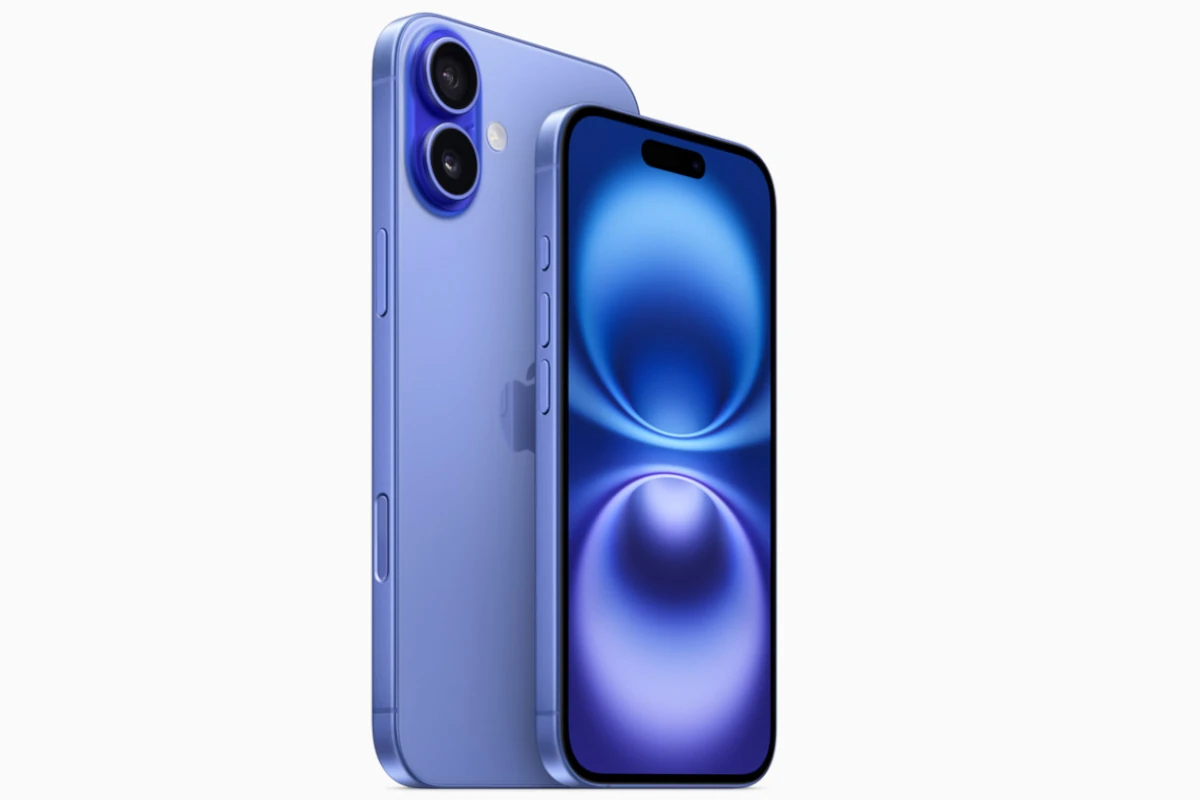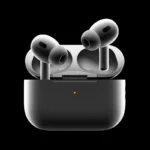Apple’s iPhone 17 lineup, expected to launch in September 2025, is shaping up to be the most substantial redesign in years. From a dramatically thinner chassis to powerful camera upgrades and a brand-new “Air” model, the upcoming series is more than just an incremental refresh—it’s a pivot point for iPhone design and performance.
Here’s an in-depth look at the most credible and exciting rumors surrounding the iPhone 17 family.
🔄 Major Changes Coming to All iPhone 17 Models
- 120Hz ProMotion on all models: For the first time, Apple is expected to bring LTPO 120Hz ProMotion displays to the entire iPhone 17 range—including the base model. This means buttery-smooth scrolling and better power efficiency even for budget buyers.
- 24MP front-facing camera: A major leap from the long-standing 12MP sensor, Apple is reportedly upgrading the selfie camera across the board, allowing for sharper FaceTime calls, better low-light selfies, and enhanced AR features.
- Wi-Fi 7 with Apple’s own chip: Apple is ditching Broadcom and designing its own Wi-Fi 7 chip. This should result in lower latency, higher speeds, and more efficient wireless performance.
- iOS 26 and Apple Intelligence integration: All models are expected to launch with iOS 26 and have full support for Apple’s on-device AI framework, including smart photo editing, summarization, and predictive suggestions.
📏 Size, Display & Design: Thinner, Bolder, Cleaner
- Base iPhone 17: The standard model is rumored to increase from 6.1″ to 6.3″, bringing it closer to the Pro in screen size. Bezels will reportedly be slimmer with a more refined Dynamic Island cutout.
- New “iPhone 17 Air”: This is the most talked-about addition. Touted as Apple’s thinnest iPhone ever at just 5.2mm to 5.6mm, the iPhone 17 Air could replace the “Plus” and offer a sleek alternative to the bulkier Pro Max. It’s said to feature a single 48MP rear camera and minimalist design cues.
- USB-C Port Misalignment?: One curious rumor suggests the iPhone 17 Air’s USB-C port may not be perfectly centered due to internal layout constraints—something that has already sparked debate among Apple design purists.
- Pro/Pro Max frame redesign: Expect a revised aluminum frame (possibly replacing titanium), a new camera island layout, and relocated Apple logo—possibly to accommodate vapor-chamber cooling. This thermal solution would allow for longer sustained performance and cooler operation, especially under gaming or video editing loads.
📸 Camera Upgrades: Sharper, Smarter, More Versatile
- 48MP telephoto lens (Pro/Pro Max): Apple appears to be doubling down on photography. A new 48MP telephoto camera is expected in the high-end models with support for 3.5x optical zoom and enhanced digital cropping for 5x and 7x zoom levels.
- 8K video + Dual Capture: Pro and Pro Max models may support 8K video recording for the first time. A “dual capture” mode is rumored, allowing users to record using front and rear cameras simultaneously.
- Mechanical aperture prototype: Apple is reportedly testing mechanical aperture systems, though it’s still uncertain if they’ll be included in the iPhone 17 Pro. If implemented, this feature would allow the phone to adjust aperture in real-time like a DSLR—enabling sharper photos in bright light and smoother bokeh in portraits.
⚙️ Performance & Battery: Bigger, Faster, Smarter
- A19 Pro chipset for Pro models: Built on TSMC’s next-gen 3nm process, the A19 Pro is expected to bring serious power gains and improved neural processing for AI tasks.
- Base/Air models: Rumored to use the standard A19 or possibly a tweaked A18 chip—still offering solid performance, though not quite flagship tier.
- RAM increases: Pro and Air models will come with 12GB of RAM, while the base model gets an upgrade to 8GB—ensuring smoother multitasking and better AI features.
- Massive battery boost: The iPhone 17 Pro Max may include a ~5,000mAh battery—making it Apple’s largest ever. This could give it the longest battery life of any iPhone to date, especially when paired with iOS optimizations and LTPO display tech.
🎨 Colors & Style: A Splash of the New
- Standard colors: Expect new shades like lavender purple and mint green to hit the base iPhone 17 lineup.
- Pro-exclusive: A new “Sky Blue” color is rumored to join the Pro models, replacing last year’s Natural Titanium option.
📅 Launch Timing
Apple is widely expected to reveal the iPhone 17 lineup during the second week of September 2025 (likely between September 9–13). Pre-orders should go live the same week, with retail availability the following Friday.
🧭 Should You Wait?
With 120Hz finally arriving on base models, a completely redesigned Air variant, improved AI capabilities, major camera upgrades, and better battery life, the iPhone 17 looks like a must-watch release. If you’re currently using an iPhone 13 or older—or even an iPhone 14 without ProMotion—waiting for the iPhone 17 could offer massive value for your upgrade.
The real wild card is the iPhone 17 Air, which could introduce a whole new category of ultra-portable, high-performance devices. Whether you value thinness, battery life, or camera versatility, this year’s lineup seems to cover all bases.
iPhones Ranked From Best to Worst
Choosing a new iPhone can be tough with so many options available. Apple releases new models each year, with different features, sizes, and price points. It’s important to know which iPhone best fits your needs before spending your money.
The best iPhone for you depends on what you value most—whether that’s camera quality, screen size, battery life, or price. Some people need the latest technology, while others are happy with older models that cost less. This ranking will help you decide which iPhone is worth buying in 2025.
1. iPhone 16 Pro Max
The iPhone 16 Pro Max stands at the top of Apple’s smartphone lineup in 2025. It’s widely considered the best iPhone you can buy, combining premium features with the largest display in the lineup.
This flagship model comes with a hefty price tag starting at $1,199. The steep cost buys you Apple’s most powerful chipset and the best camera system available on an iPhone.
Screen size is a major selling point. The Pro Max features a larger display than the standard iPhone 16 Pro while maintaining identical internal specifications. This makes it perfect for users who want maximum screen real estate.
Battery life exceeds expectations on the Pro Max. The larger frame allows for a bigger battery, giving users more time between charges compared to smaller iPhone models.
Camera quality remains exceptional. The Pro Max includes advanced photography features that appeal to serious smartphone photographers and casual users alike.
The device shares the new shortcut buttons found across the iPhone 16 lineup. These buttons provide quick access to common functions, improving the user experience.
Weight might be an issue for some users. The Pro Max is noticeably heavier than other iPhones, which can cause fatigue during extended use.
Despite the premium price, the Pro Max earned strong recommendations from tech reviewers. It scored 8/10 from WIRED, highlighting its appeal to those seeking the ultimate iPhone experience.
For users who want top-tier performance without compromise, the iPhone 16 Pro Max delivers. Its combination of screen size, battery life, and camera quality justifies its position at the top of Apple’s smartphone hierarchy.
2. iPhone 16 Pro
The iPhone 16 Pro stands as Apple’s premium offering that balances size and features. With its 6.3-inch display, it’s slightly larger than previous Pro models but remains comfortable to hold for most users.
Camera performance on the 16 Pro is exceptional. The triple-lens system delivers excellent photos in nearly all lighting conditions, with the upgraded ultrawide lens capturing more detail than before.
Battery life has seen notable improvements over the 15 Pro. Most users can expect a full day of heavy use, though it doesn’t quite match the impressive battery performance of the larger 16 Pro Max or 16 Plus models.
The A18 Pro chip powers the device, handling everything from gaming to video editing with ease. Apple’s focus on AI features shows in the smooth operation of on-device processing tasks.
Build quality remains top-tier with the titanium frame offering durability while keeping weight down. The matte glass back resists fingerprints better than glossy alternatives on standard models.
Many reviewers consider the 16 Pro Apple’s best phone for most premium users. It hits the sweet spot between the standard 16 and the larger Pro Max.
The camera control button represents a useful addition, allowing quick access to photography features without navigating through menus. This physical button feels natural and responsive during use.
For those willing to invest in a premium iPhone without going for the largest size, the 16 Pro delivers nearly everything the Pro Max offers in a slightly more compact form. The price reflects its premium position but matches what most expect from Apple’s Pro lineup.
3. iPhone 16
The iPhone 16 stands out as the best iPhone for most people in 2025. Apple’s standard model hits a sweet spot between features and price at $799.
This phone comes in two size options. You can choose between the standard 6.1-inch model or go bigger with the 6.7-inch iPhone 16 Plus. Both offer similar features with the Plus providing more screen space and better battery life.
Battery performance on the iPhone 16 is impressive. While not matching the Pro Max version, it still delivers solid all-day use. The Plus model goes even further, with hours of extra run time compared to the standard size.
Camera quality takes a jump from previous generations. The iPhone 16 features an upgraded system that handles low-light situations better and captures more detail. It’s not quite Pro-level, but close enough for most users.
Apple added new shortcut buttons to the iPhone 16, making it easier to access common functions. This gives the standard model an almost Pro-like experience that wasn’t available in earlier non-Pro iPhones.
The A18 chip powers the iPhone 16, offering fast performance for daily tasks and gaming. Apps open quickly, and the phone handles multitasking without slowdowns.
Display quality remains excellent with bright, vivid colors and good outdoor visibility. The standard 60Hz refresh rate is adequate, though not as smooth as the Pro models’ ProMotion displays.
Ranked at the top of many 2025 iPhone lists, the iPhone 16 earns its spot through balanced features, reasonable pricing, and reliable performance. For those who want a premium iPhone experience without paying Pro prices, it’s the clear choice.
4. iPhone 16 Plus
The iPhone 16 Plus stands out as Apple’s answer for those who want a bigger screen without paying for Pro features. With its 6.7-inch display, it matches the Pro Max in size while being more affordable.
Battery life is a major selling point for the 16 Plus. The larger body houses a bigger battery than the standard iPhone 16, typically lasting through a full day of heavy use and into a second day for many users.
Camera performance on the 16 Plus mirrors the standard iPhone 16, featuring the same dual-camera system. While it lacks the telephoto lens found in Pro models, its main and ultrawide cameras capture excellent photos in most lighting conditions.
The A18 chip powers the iPhone 16 Plus, delivering strong performance for everyday tasks and gaming. It handles everything from social media to graphically intensive games without stuttering or excessive battery drain.
One drawback is the weight. The larger screen and battery make the 16 Plus noticeably heavier than the standard model, which might be uncomfortable for users with smaller hands or those who prefer lighter devices.
The 16 Plus includes the new shortcut button found across the iPhone 16 lineup, providing quick access to commonly used functions and apps. This feature adds convenience for frequent phone users.
Storage options start at 128GB, which is adequate for most users. Those who take lots of photos or videos should consider upgrading to higher storage tiers to avoid running out of space.
For users who prioritize screen size and battery life but don’t need Pro camera features, the iPhone 16 Plus hits a sweet spot in Apple’s lineup. It delivers a premium experience without the premium price tag of the Pro models.
5. iPhone 15 Pro Max
The iPhone 15 Pro Max still holds its ground among Apple’s lineup despite newer models. Released in 2023, it features a titanium frame that makes it lighter yet more durable than previous models.
Its 6.7-inch Super Retina XDR display offers exceptional brightness and clarity for videos, photos, and everyday use. The ProMotion technology provides smooth scrolling with its 120Hz refresh rate.
Camera performance remains impressive with its 48MP main sensor. The telephoto lens delivers 5x optical zoom, perfect for capturing distant subjects with clarity.
Battery life is a standout feature. Many users report getting through a full day of heavy use without needing to recharge. This helps justify its premium price tag.
The A17 Pro chip powers the device efficiently. It handles demanding tasks like video editing and gaming without noticeable lag or battery drain.
The Action Button replaced the traditional mute switch, giving users customizable shortcuts. This feature later appeared in the iPhone 16 models.
Storage options start at 256GB, which is ample for most users. The higher capacity options benefit photographers and videographers who capture lots of content.
The titanium construction helps it resist scratches better than stainless steel models. This keeps it looking newer longer than previous Pro Max versions.
6. iPhone 15 Pro
The iPhone 15 Pro marks Apple’s shift to titanium for its Pro-level devices. This change makes the phone lighter while maintaining durability compared to previous stainless steel models.
Despite its premium design, the iPhone 15 Pro has received mixed reactions from users. According to reddit discussions, it has the lowest sentiment score of all iPhones since 2019, which is surprising for a flagship device.
The phone introduces the customizable Action Button, replacing the traditional mute switch. This button can be set to perform various tasks like turning on the flashlight or opening the camera.
Camera performance is a strong point for the 15 Pro. It features impressive photography capabilities, though the 5x optical zoom is exclusive to the Pro Max model, giving the larger variant an edge for serious photographers.
The A17 Pro chip powers the device, enabling console-quality gaming and improved efficiency. This processor handles intensive tasks with ease while managing battery life effectively.
Display quality remains excellent with the ProMotion technology delivering smooth scrolling and responsiveness. The always-on display shows useful information without significantly draining the battery.
For many users, the iPhone 15 Pro sits in an awkward middle ground. It costs significantly more than the standard iPhone 15 but lacks some of the Pro Max’s camera features. This positioning makes it a tough sell for value-conscious consumers.
Battery life is adequate but not revolutionary. Most users can get through a full day of normal use, though heavy tasks like gaming or video recording will drain it faster.
The iPhone 15 Pro represents solid evolution rather than revolution in Apple’s lineup. While it offers premium features and performance, the value proposition isn’t as clear as with some other models in the range.
7. iPhone 15
The iPhone 15 sits in the middle of Apple’s current lineup, offering a solid mix of features at a more accessible price point than the Pro models. Released in late 2023, it features the A16 Bionic chip which delivers reliable performance for everyday tasks.
One of the biggest upgrades was the switch to USB-C charging, moving away from Apple’s proprietary Lightning connector. This change makes it easier to use one cable for multiple devices.
The iPhone 15 comes with a 6.1-inch display that’s bright and colorful, though it lacks the ProMotion technology found in pricier models. It’s comfortable to hold and use with one hand, unlike the larger Plus and Pro Max versions.
Camera performance is quite good with a 48-megapixel main sensor. Photos look sharp with nice color accuracy in good lighting. Night mode has improved from previous generations, making low-light photography more reliable.
Battery life on the iPhone 15 lasts about a full day with normal use. It’s not the battery champion of the lineup, but it’s sufficient for most people’s daily needs.
The iPhone 15 comes in several attractive colors and features the Dynamic Island at the top of the screen, which was previously exclusive to Pro models.
Apple priced the iPhone 15 reasonably compared to the Pro models, making it an appealing option for those who want a current iPhone without paying premium prices. It ranks lower than the 16 series and 15 Pro models mainly because those offer more cutting-edge features.
For people upgrading from an iPhone 12 or older, the iPhone 15 represents a significant jump in capabilities. However, those with an iPhone 13 or 14 might not find enough new features to justify the upgrade.
8. iPhone 15 Plus
The iPhone 15 Plus sits in an interesting middle position in Apple’s lineup. Released in late 2023, it offers a larger screen experience without the premium price of Pro models.
With its 6.7-inch display, the iPhone 15 Plus gives users plenty of screen space for watching videos, playing games, or multitasking. This makes it a good choice for people who want a bigger phone but don’t need all the Pro features.
Battery life is a strong point for the 15 Plus. Thanks to its larger size, Apple packed in a bigger battery that typically lasts a full day with heavy use. Many users report getting through a day and a half without needing to charge.
Camera quality is decent but not exceptional. The 15 Plus has the same dual-camera system as the standard iPhone 15, with a 48MP main camera and a 12MP ultrawide lens. Photos look good in daylight, but low-light performance falls behind the Pro models.
The A16 Bionic chip powers the iPhone 15 Plus, making it fast enough for most tasks. While not as powerful as newer iPhone 16 models with the A17 Pro chip, it handles everything from social media to demanding games without issues.
Price is worth considering with the 15 Plus. It costs more than the standard iPhone 15 but offers mainly just a bigger screen and better battery life. For many, these upgrades aren’t worth the extra money, which explains why the 15 Plus ranks lower on most lists.
The phone comes with iOS 17 out of the box and will receive updates for years to come. This long software support helps justify the investment for those who don’t upgrade phones often.
Color options include blue, pink, yellow, green, and black—all with a sleek glass back that supports wireless charging. The switch to USB-C charging instead of Lightning also makes this model more compatible with other devices.
9. iPhone 14 Pro Max
The iPhone 14 Pro Max stands as one of Apple’s most impressive devices from 2022. Many consider it the best iPhone in terms of overall performance and features for its generation.
Battery life on the 14 Pro Max is exceptional. Even as the battery health decreases to 87% capacity, users report it still maintains strong performance throughout the day. This makes it ideal for heavy users who need reliable power.
The camera system represents a significant upgrade from previous models. It captures detailed photos in various lighting conditions and offers professional-grade video capabilities.
Apple introduced the Dynamic Island with this model, replacing the traditional notch. This interactive area houses notifications and live activities, making it more functional than previous designs.
The A16 Bionic chip powers the device with impressive speed. Even in 2025, the processor handles demanding tasks and games without struggling. This explains why many users keep their 14 Pro Max rather than upgrading.
Display quality remains competitive with the 6.7-inch Super Retina XDR screen featuring ProMotion technology. The adaptive refresh rate keeps scrolling smooth while conserving battery when needed.
Build quality continues the premium standard expected from Apple’s Pro lineup. The stainless steel frame and Ceramic Shield front provide durability that holds up well over time.
While newer models offer some improvements, the 14 Pro Max maintains relevance through regular iOS updates. It supports the latest software features, extending its useful lifespan beyond many competitors.
For those looking at older iPhone models to save money, the 14 Pro Max represents a strong option that balances cost with capability in 2025.
10. iPhone 14 Pro
The iPhone 14 Pro remains a solid choice even in 2025. Released in 2022, it introduced the Dynamic Island feature that replaced the traditional notch with a more interactive display area.
This model sports a powerful A16 Bionic chip that still handles demanding apps and games with ease. For photography enthusiasts, the 48MP main camera marked a significant upgrade from previous generations and continues to deliver excellent photos.
Battery life is another strong point. Even with heavy use, the iPhone 14 Pro typically lasts through a full day. Many users report that even as the battery health decreases to around 87%, the phone still performs strongly in this department.
The 6.1-inch Super Retina XDR display features ProMotion technology with a 120Hz refresh rate, making scrolling smooth and responsive. The always-on display option lets users check time and notifications without waking the device.
Apple’s safety features like Crash Detection and Emergency SOS via satellite provide peace of mind, especially for those who travel to remote areas. These features have proven valuable in real emergency situations.
While newer models offer some improvements, the iPhone 14 Pro hits a sweet spot of performance and value. Its price has decreased since newer generations launched, making it more accessible.
The stainless steel frame and Ceramic Shield front provide excellent durability. Many users report their phones surviving drops and daily wear with minimal damage.
For those who don’t need the absolute latest features, the iPhone 14 Pro represents a balanced option that will remain capable for several more years of iOS updates.
Key Features of iPhones
Apple iPhones stand out in the smartphone market due to their distinctive features that combine technology, design, and user experience. Each generation brings improvements that keep the brand at the forefront of mobile innovation.
Innovative Camera Technology
The iPhone camera system has evolved dramatically since the original 2-megapixel camera on the first iPhone. Modern iPhones feature sophisticated multi-lens systems with impressive capabilities.
The iPhone 16 Pro Max leads with the best cameras in the lineup, offering professional-grade photography features. Many models include Night mode, which captures stunning low-light photos without a flash.
Portrait mode uses depth sensing to create studio-quality portraits with beautifully blurred backgrounds. The technology works for both rear and front-facing cameras on newer models.
Video recording has become equally impressive, with recent iPhones capturing 4K video at 60fps. The Cinematic mode introduced with iPhone 13 automatically creates depth effects and focus transitions for filmmaking.
ProRAW and ProRes formats give photographers and videographers professional editing flexibility. These features appeal to content creators who need high-quality visual outputs from a pocket-sized device.
Performance and Speed
iPhones are known for their excellent performance thanks to Apple’s custom silicon. The A-series chips consistently outperform many competitors in benchmarks and real-world use.
The latest models feature the A18 chip, which handles demanding tasks like gaming, video editing, and AI processing with ease. This power enables features like new camera smarts and smooth multitasking.
Battery life has improved significantly over generations. The iPhone XR was noted for its exceptional battery performance, and newer models continue this trend with the iPhone 16 offering lengthy battery life.
iOS optimization means iPhones typically feel fast and responsive even years after purchase. Apple’s long-term software support extends the useful life of devices far beyond many Android alternatives.
The Neural Engine in modern chips enables on-device machine learning, powering features like face recognition and real-time photo enhancements without sending data to the cloud.
Design and Build Quality
iPhones are recognized for premium materials and build quality. The evolution from aluminum to glass backs with stainless steel or aluminum frames creates devices that feel substantial and luxurious.
Color options have expanded beyond basic black and white. The iPhone XR introduced wonderful color options, and Apple continues offering vibrant choices alongside more traditional finishes.
Screen technology has progressed from LCD to OLED for improved contrast and color accuracy. ProMotion displays on Pro models provide smooth 120Hz refresh rates that make scrolling and animations feel more responsive.
Water and dust resistance has become standard, with recent models achieving IP68 ratings. This protection provides peace of mind for everyday use in various environments.
The physical design has evolved while maintaining recognizable iPhone elements. The Action Button on newer models and new shortcut buttons add functionality while preserving the clean aesthetic Apple is known for.
Evolution of iPhone Models
The iPhone has transformed significantly since its 2007 launch, with each generation bringing new features and capabilities that have shaped modern smartphones. Apple’s continuous innovation has resulted in major design shifts and technological advancements that keep consumers coming back.
Major Breakthroughs in iPhone History
The original iPhone changed everything with its touchscreen interface and intuitive design. Steve Jobs introduced it as three devices in one: “a widescreen iPod with touch controls, a revolutionary mobile phone, and a breakthrough internet device.”
The iPhone 4 marked a significant shift with its glass-and-steel design and the introduction of the Retina display. This model also brought FaceTime to the masses, changing how people communicate.
The iPhone 5s introduced Touch ID, bringing fingerprint authentication to smartphones and setting a new security standard. This technology paved the way for mobile payments through Apple Pay.
Perhaps the most dramatic redesign came with the iPhone X, which eliminated the home button, introduced Face ID, and featured an edge-to-edge OLED display. Many consider it among the best iPhones ever created.
Impact of iOS Updates
iOS updates have often extended the life of older iPhone models, bringing new features without requiring hardware upgrades. This software support typically spans 5-7 years, far exceeding most Android competitors.
The introduction of the App Store with iOS 2 created an entirely new digital economy. Today’s App Store features millions of applications that have generated billions in revenue for developers.
iOS 7 brought a complete visual overhaul, moving away from skeuomorphic design to a flatter, more modern aesthetic. This dramatic shift influenced mobile design trends across the industry.
Privacy features introduced in later iOS versions, such as App Tracking Transparency and Privacy Nutrition Labels, have forced the entire tech industry to reconsider data practices. These changes reflect Apple’s focus on user privacy as a key differentiator.
Frequently Asked Questions
iPhones range dramatically in quality, performance, and value. The newest models offer cutting-edge features while some older versions still provide excellent functionality at lower prices.
What are the top-rated iPhone models currently available?
The iPhone 16 Pro Max leads the pack as Apple’s most premium smartphone. It boasts the largest screen, most powerful chipset, and best camera system in the lineup.
The iPhone 16 Pro follows closely behind with nearly identical specs in a slightly smaller package. Many users prefer its more manageable size while still enjoying pro-level features.
For those seeking value, the standard iPhone 16 offers an almost Pro-like experience at a lower price point. It includes new shortcut buttons, excellent cameras, and impressive battery life.
How do the latest iPhone models compare to each other in terms of performance?
The iPhone 16 Pro and Pro Max share the same A18 Pro chip, giving them identical processing power. This translates to seamless performance with demanding apps and games.
The standard iPhone 16 and 16 Plus use the regular A18 chip. While slightly less powerful than the Pro versions, they still handle everyday tasks with ease and run most games smoothly.
Battery life varies significantly across models. The iPhone 16 Pro Max offers the longest runtime due to its larger physical size, while the base iPhone 16 surprisingly outperforms the 16 Pro in some battery tests.
What are the common issues found in the least popular iPhone models?
Less popular iPhone models often suffer from shorter battery life. The iPhone 12 mini, while beloved by small phone enthusiasts, disappointed many users with its limited runtime.
Thermal issues plague some models. The iPhone 15 series faced complaints about overheating during intensive tasks, though software updates addressed many of these problems.
Camera quality gaps have widened between standard and Pro models. Base models increasingly feel like they’re missing out as Apple reserves its best photography features for premium versions.
Which older iPhone models still offer the best value for money?
The iPhone 13 remains an excellent value option in 2025. It offers solid performance, good camera quality, and continues to receive software updates at a significantly reduced price.
The iPhone SE (2022) provides the most affordable entry point to iOS. It features the same processor as the iPhone 13 in a classic design with Touch ID, making it perfect for budget-conscious buyers.
For those wanting a Pro experience without the latest price tag, the iPhone 14 Pro offers features like the Dynamic Island and always-on display at much lower costs than current flagships.
How have iPhone models evolved over the years in terms of features and user satisfaction?
Camera capabilities have seen the most dramatic improvements. Early iPhones featured basic single cameras, while modern versions include sophisticated multi-lens systems with computational photography.
Battery life has gradually improved despite phones becoming more powerful. The iPhone 15 Pro Max marked a significant leap forward, and the 16 series continues this positive trend.
Display technology has transformed the user experience. The introduction of OLED, higher refresh rates, and the Dynamic Island have made iPhones more visually impressive and functional.
In the history of iPhones, which models have been considered less successful, and why?
The iPhone 5c failed to meet Apple’s sales expectations. Its plastic design and minimal upgrades over the iPhone 5 resulted in lukewarm reception despite its colorful options.
The original iPhone SE (2016) divided opinion. While it satisfied users wanting a smaller form factor, its recycled design felt dated to many even at launch.
The iPhone 14 Plus struggled with its positioning. Priced between the standard and Pro models, it offered little beyond a larger screen, making the Pro Max seem like a better value for power users seeking a bigger display.







